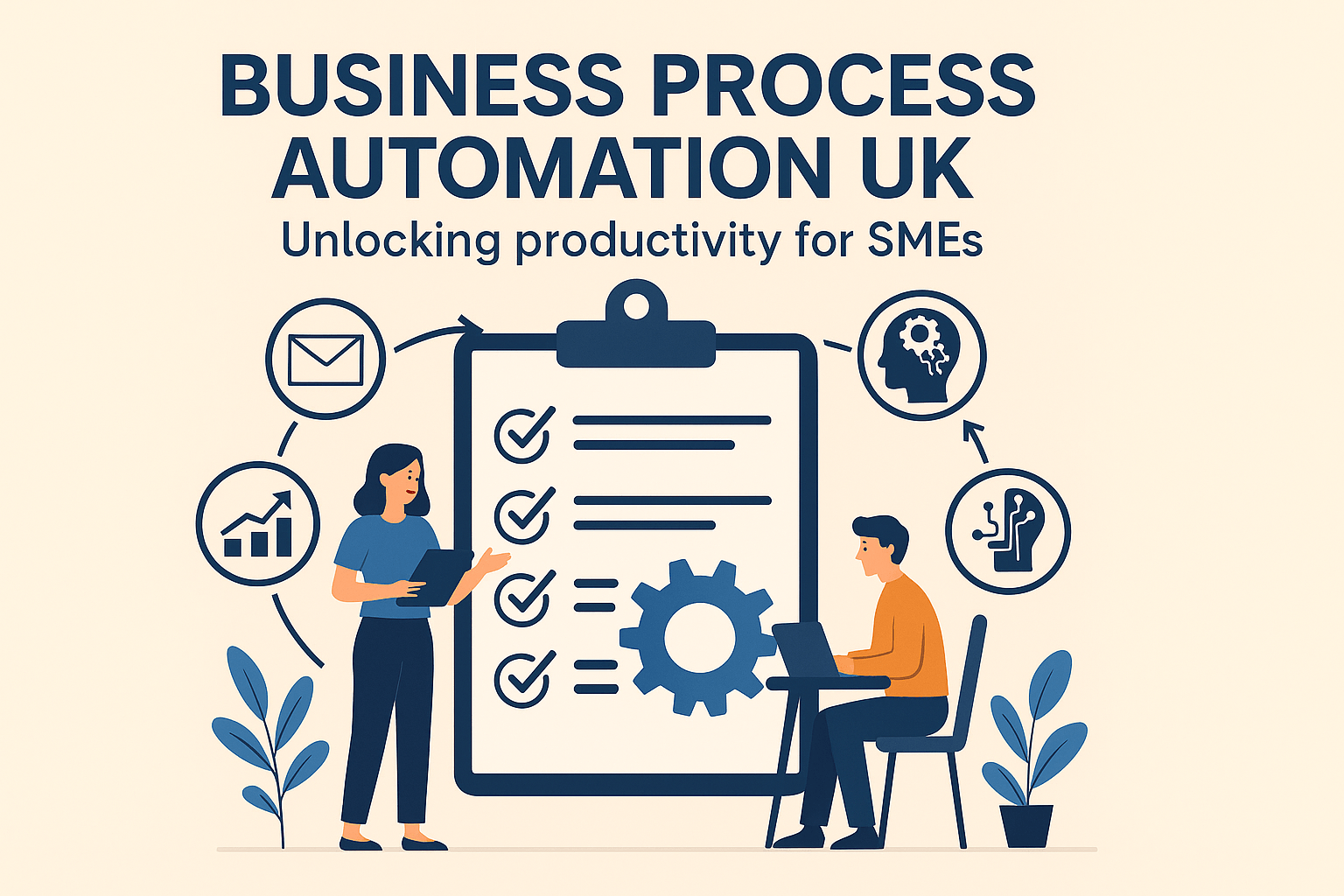As we enter 2025, small and medium-sized enterprises (SMEs) face growing challenges and opportunities in a rapidly evolving business landscape. Staying competitive, scaling efficiently, and meeting customer expectations require innovative strategies—and that’s where artificial intelligence (AI) and automation come into play. With accessible tools and practical applications, AI and automation can revolutionise SMEs’ operations.
Here are five impactful ways AI and automation can help SMEs achieve their 2025 goals:
1. Streamlining Repetitive Tasks
Repetitive administrative tasks consume valuable time and energy that could be directed toward strategic growth. AI-powered automation tools can effortlessly handle these processes, allowing SMEs to focus on what matters most.
Examples:
- Automate invoice generation and send payment reminders with tools like Xero or QuickBooks.
- Scheduling social media posts using platforms like Buffer or Hootsuite.
- Using chatbots such as ChatGPT to respond to customer inquiries instantly.
Benefits:
- Saves time and reduces errors.
- Improves consistency and reliability.
- Frees up employees for higher-value tasks.
Case Study: A UK-based digital marketing agency implemented AI-powered invoice automation in 2024, reducing the time spent on billing tasks by 65%. This allowed their team to focus more on creative strategies, resulting in a 20% revenue increase within six months.
2. Enhancing Customer Service
Exceptional customer service is a key differentiator in today’s competitive market. AI-driven tools can elevate customer experience by offering instant, personalised support.
Examples:
- Implementing AI chatbots like Intercom or Zendesk to handle FAQs and provide 24/7 assistance.
- Analysing customer sentiment through AI tools like MonkeyLearn to identify and address pain points.
- Automating follow-ups with email sequences tailored to customer interactions.
Benefits:
- Faster response times.
- Improved customer satisfaction and retention.
- Personalised service at scale.
Statistics: According to a 2025 report by Gartner, businesses using AI chatbots saw a 70% reduction in customer response times and a 35% increase in customer retention rates.
Case Study: A small e-commerce business integrated an AI chatbot in late 2024, which managed 85% of customer inquiries without human intervention. This change reduced support costs by 40% and improved their average customer satisfaction score by 25%.
3. Optimising Workflow Efficiency
Efficient workflows are the backbone of productive SMEs. Businesses can identify bottlenecks and automate complex workflows by integrating AI into operations.
Examples:
- Workflow automation platforms like Zapier or Microsoft Power Automate can connect tools and automate tasks across systems.
- Deploying project management tools like Asana or Trello enhanced with AI for task prioritisation and deadline management.
Benefits:
- Streamlined operations.
- Better resource allocation.
- Increased team productivity.
Statistics: A recent McKinsey survey found that companies using workflow automation reported a 30% improvement in overall operational efficiency.
Case Study: A manufacturing SME in the UK automated its inventory tracking system in 2024. This reduced inventory errors by 50% and improved order fulfilment times by 30%, helping them secure new contracts in 2025.
4. Driving Data-Driven Decisions
AI excels at processing and analysing large datasets, providing actionable insights to guide decision-making. This means making smarter choices for SMEs without needing a dedicated data science team.
Examples:
- AI analytics tools like Tableau or Looker can be used to visualise trends and performance metrics.
- Predicting customer behaviour with tools like HubSpot CRM to optimise marketing campaigns.
- Managing inventory efficiently by forecasting demand with AI-powered inventory systems.
Benefits:
- Improved accuracy in forecasting and planning.
- Data-backed decisions that reduce risks.
- Enhanced ability to identify growth opportunities.
Case Study: A retail SME leveraged AI analytics to forecast seasonal demand in 2024. As a result, they optimised stock levels and increased sales by 18% during the holiday season while reducing excess inventory costs by 22%.
5. Reducing Operational Costs
Cost efficiency is crucial for SMEs aiming to scale. AI and automation can significantly reduce operational expenses by minimising manual intervention and optimising resource use.
Examples:
- Automate HR processes like payroll and recruitment with tools like BambooHR or Gusto.
- Using AI for energy management systems to lower utility bills.
- Implementing AI-driven marketing campaigns to maximise ROI with platforms like Adzooma.
Benefits:
- Lower operational costs.
- Better resource management.
- Increased profitability.
Statistics: A 2025 study by PwC found that SMEs adopting AI in operational processes reduced costs by an average of 25% within the first year.
Case Study: A London-based consulting firm automated its payroll and time-tracking systems in early 2024. This reduced HR overhead by 40% and improved employee satisfaction scores by 15% due to accurate and timely payments.
Getting Started with AI and Automation
Adopting AI and automation doesn’t require a massive budget or technical expertise. Start small by identifying repetitive or time-consuming tasks and implementing tools that address those pain points. Gradually expand your automation efforts as you see results and gain confidence.
Pro Tips for SMEs:
- Assess Your Needs: Map out your workflows and identify areas for improvement.
- Choose Scalable Tools: Opt for solutions that can grow with your business.
- Train Your Team: Provide training to ensure employees can maximise the benefits of new technology.
- Measure Impact: Track metrics like time saved, cost reductions, and customer satisfaction to evaluate success.
Conclusion
AI and automation are no longer luxuries reserved for large corporations. SMEs can harness these technologies to boost productivity, cut costs, and confidently achieve their 2025 goals. By starting with manageable implementations and focusing on high-impact areas, your business can stay ahead in an increasingly digital world.
Ready to transform your business? Start exploring AI and automation tools today, and watch your operations soar to new heights!



